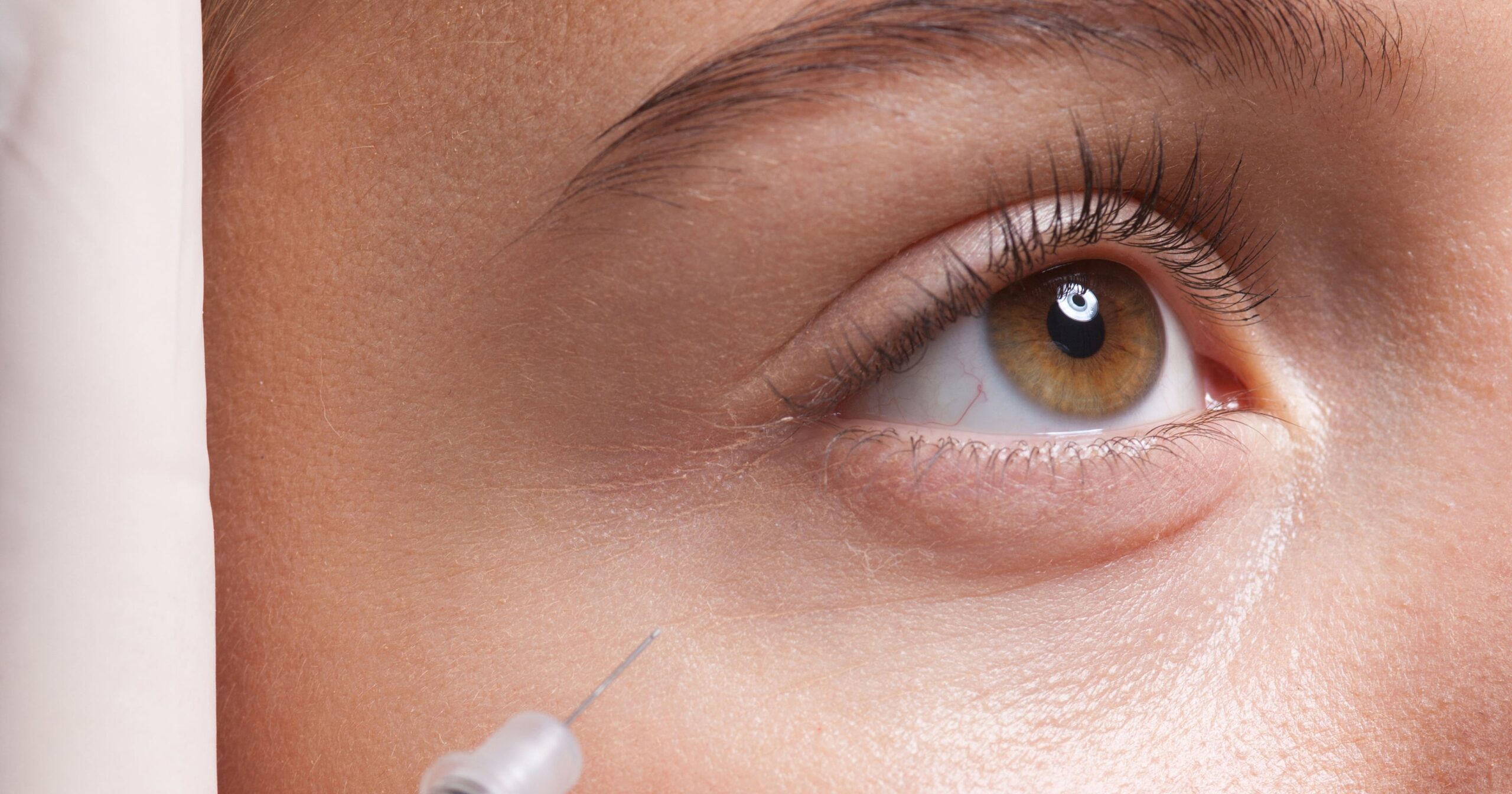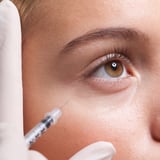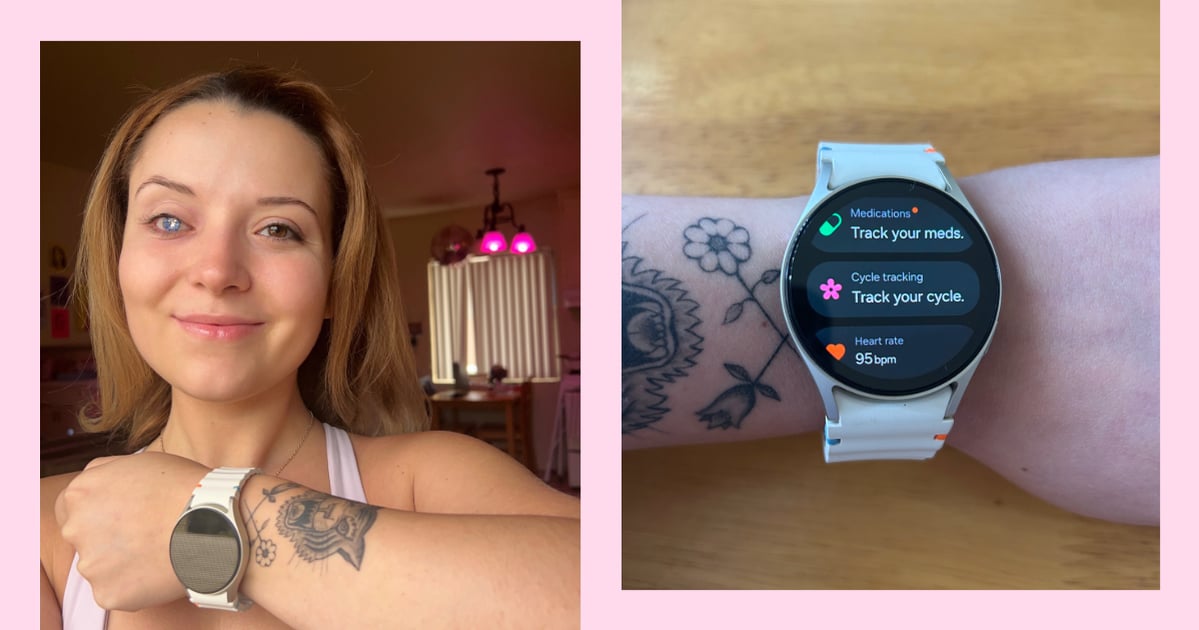If the eyes are the window to the soul, the undereye area is the couch on which all of the soul’s stresses like to lounge. Also called the tear trough, the undereye area can sometimes be a pretty good mirror for what’s going on in our day-to-day. Didn’t get enough sleep? Cue the dark circles. Aging (however gracefully)? Hollowing from a loss of collagen is probably on your radar.
Of course, there’s nothing wrong with having wrinkles around the eyes (aka crow’s feet) or a lack of volume under the eyes (which can also be genetic) – and you certainly never have to make any changes to your appearance. But if you do want to address those concerns, there is now an FDA-approved dermal filler available specifically for that area: Restylane Eyelight. We spoke to two board-certified dermatologists about what you need to know about Eyelight before heading to your doctor.
What Is Restylane Eyelight?
Restylane Eyelight is a clear injectable gel composed of hyaluronic acid (HA), a natural substance that already exists in the body. Restylane Eyelight is crosslinked with butanediol diglycidyl ether (BDDE), an ingredient that helps form a network of HA to provide a gel filler that lasts longer. It’s also formulated with Nasha Technology, which basically means it has a firm gel texture intended for a more pronounced lift. Restylane Eyelight fills in the undereye area to reduce shadows and hollows.
“Eyelight has one of the highest abilities to re-volumize and lift the tear trough area with a small amount of product,” says board-certified dermatologist Carolyn Jacob, MD, FAAD, who was also a lead investigator in the clinical trial of Restylane Eyelight.
Speaking of the clinical trial, here’s what pushed Eyelight into FDA-approval: “It has been specifically studied for use in the infraorbital hollows, which includes the area known as the tear troughs, as well as the lateral infraorbital hollow (IOH),” Dr. Jacob says. In the study, Eyelight showed success in “efficacy in improving the hollows by moving the bar one grade of improvement,” and it showed a higher degree of safety in terms of adverse events. “There were few adverse events such as bruising or tenderness, which can occur with all HA fillers.”
While a filler hadn’t been FDA-approved for use specifically under the eyes until now, dermatologists often use other fillers for this area as an off-label treatment. So why choose Restylane Eyelight (other than the FDA approval, of course)? “Restylane Eyelight is a hyaluronic acid gel filler that has properties that make it smooth and moldable in the undereye area,” says board-certified dermatologist Nancy Samolitis, MD FAAD. “This is very important because there is not a lot of space under the thin skin and muscle under the eye. Other types of fillers can be visible, bumpy, or look dark through the skin. Eyelight is less likely to cause these adverse effects.” Dr. Samolitis adds that Eyelight is less likely to clump into a nodule because it’s not as cohesive as many other hyaluronic acid gel fillers.
Another reason to choose Restylane Eyelight: “It lasts a very long time in this area, usually at least a year in my experience and sometimes longer,” says Dr. Samolitis. Dr. Jacob agrees, saying that while studies show improvements up to 18 months with optimal treatment, in her experience, it can last longer in some patients.
Who Is a Good Candidate for Restylane Eyelight?
According to Dr. Samolitis, a good candidate is someone who truly has volume loss (loss of fat) under the eye – this is what causes the hollow look in the tear trough area. “Unfortunately, a lot of other causes of dark circles under the eyes are not from volume loss, but from thin skin, pigmentation, increased vascularity, or skin laxity,” she says. “It’s very important to [choose a] provider who is very experienced in assessing this area before being injected.”
What are the Side Effects of Restylane Eyelight?
Swelling is pretty typical for the undereye area, and can last anywhere from two to five days depending on the amount of filler used and your tendency to swell. “I usually suggest sleeping propped up on an extra pillow, taking non-sedating antihistamines (like Zyrtec or Xyzal), and using ice every few hours to reduce swelling,” says Dr. Samolitis. She suggests avoiding any activities that would increase the blood pressure in the face like strenuous exercise, head inversions, or lying face-down until the product appears to be fully settled. Bruising can also happen, but often depends on the person’s tendency to bruise and the injection technique. You can always take arnica supplements to help reduce that from happening; just make sure to check with your doctor before taking any new supplements.
“There are some more serious side effects that can occur after any filler injection in any location, so I always recommend that my patients notify me of anything outside of bruising and swelling that they may be experiencing post-procedure,” says Dr. Samolitis. It’s also important to note that the Restylane Eyelight formula (like many fillers) contains lidocaine, so if you’re allergic, let your doctor know.
What to Consider Before Getting Restylane Eyelight
If you don’t have a loss of volume under the eyes, Eyelight (and undereye filler in general) likely won’t make much of a difference, so be sure to go to an injector that you trust who has a lot of experience. They will keep you honest about the type of results you can expect. Dr. Samolitis also says that if you tend to swell easily due to genetic anatomical issues or allergies, you should probably steer clear of Eyelight – hyaluronic acid holds on to water and can make that puffiness worse.
When it comes to any filler, Dr. Samolitis suggests you ask lots of questions, ask to see photos of the doctor’s before and after results, and make sure you are told what filler is being used.




